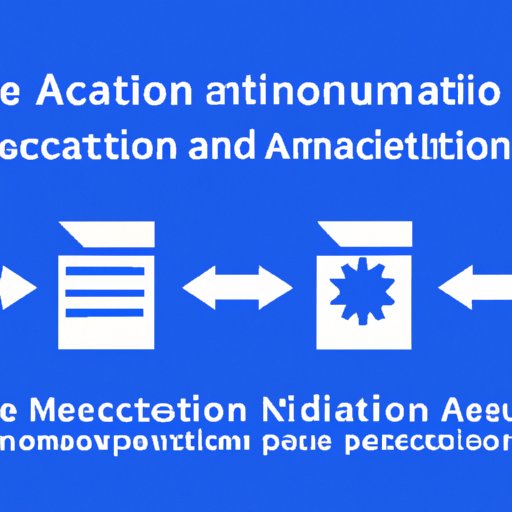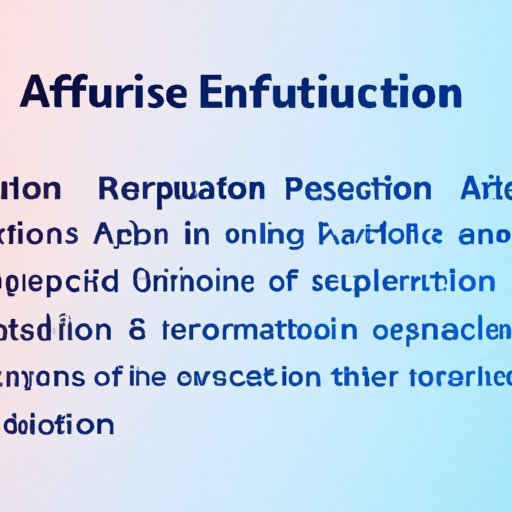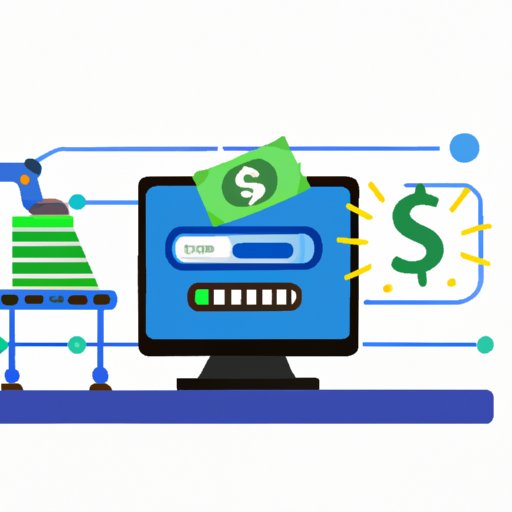Introduction
Reconciliation is the process of comparing two sets of records to ensure accuracy and completeness. Automated reconciliation is a form of this process that uses technology to compare sets of financial records. In this article, we’ll explore what automated reconciliation is, what it does, and how it can benefit businesses.

Exploring Automated Reconciliation: What It Is and How It Works
Automated reconciliation is an automated process used to compare two sets of financial records, such as bank statements and general ledger entries. The process is designed to identify errors or discrepancies between the two sets of records and then correct them.
The process works by comparing the data from both sets of records and then analyzing it for any differences. Any discrepancies are then identified and corrected. This helps to ensure accuracy and completeness of the financial records.
The process of automated reconciliation is also known as “automated matching” because it automates the process of matching two sets of records. This helps to reduce the amount of manual effort required to reconcile accounts and improves accuracy and efficiency.
Benefits of Automated Reconciliation
There are many benefits to using automated reconciliation. These include:
- Reduced manual effort: Automated reconciliation eliminates the need for manual entry and reduces the time spent reconciling accounts.
- Improved accuracy: Automated reconciliation helps to identify and correct errors quickly, reducing the risk of mistakes.
- Increased efficiency: Automated reconciliation processes data quickly, allowing for faster processing of financial transactions.
- Cost savings: Automated reconciliation helps to reduce operational costs associated with manual reconciliation.
Challenges of Automated Reconciliation
Despite the many benefits of automated reconciliation, there are also some potential challenges. These include:
- Data accuracy: Automated reconciliation relies on accurate data to be effective. If data is inaccurate or incomplete, it can lead to incorrect results.
- Security concerns: Automated reconciliation requires access to sensitive financial information, which can increase security risks if not properly managed.
- Costs: Automated reconciliation systems can be costly to implement and maintain.

A Guide to Automated Reconciliation: Benefits and Challenges
Automated reconciliation is a powerful tool for streamlining financial transactions and enhancing accuracy and efficiency in accounting. Here is a guide to understanding the benefits and challenges of automated reconciliation.
Making Financial Transactions Easier
Automated reconciliation can help make financial transactions easier and more efficient. By automating the process of comparing two sets of records, it eliminates the need for manual entry and reduces the amount of time and effort required to reconcile accounts. This can result in improved accuracy and quicker processing of financial transactions.
The Evolution of Reconciliation Practices
As technology has advanced, so too have the ways in which companies manage and reconcile their financial records. Automated reconciliation is a prime example of this evolution, offering businesses the ability to streamline and automate the process of reconciling accounts.
Enhancing Efficiency and Accuracy in Accounting
Automated reconciliation can also help to enhance efficiency and accuracy in accounting. By eliminating the need for manual entry, it can reduce the risk of errors and help to ensure accuracy of financial records. This can help to improve overall financial performance and reduce the risk of costly mistakes.
Automated Reconciliation: An Overview of the Process and its Advantages
Automated reconciliation is an automated process used to compare two sets of financial records. The process works by comparing the data from both sets of records and then analyzing it for any discrepancies. Any discrepancies are then identified and corrected, helping to ensure accuracy and completeness of the financial records.
The process of automated reconciliation offers several advantages, including reduced manual effort, improved accuracy, increased efficiency, and cost savings. However, there are also some potential challenges, such as data accuracy, security concerns, and costs. It is important to consider these factors when deciding whether automated reconciliation is right for your business.
Conclusion
Automated reconciliation is a powerful tool for streamlining financial transactions and enhancing accuracy and efficiency in accounting. It eliminates the need for manual entry, reduces the time spent reconciling accounts, and helps to ensure accuracy of financial records. While there are some potential challenges, the benefits of automated reconciliation far outweigh the risks.
(Note: Is this article not meeting your expectations? Do you have knowledge or insights to share? Unlock new opportunities and expand your reach by joining our authors team. Click Registration to join us and share your expertise with our readers.)
